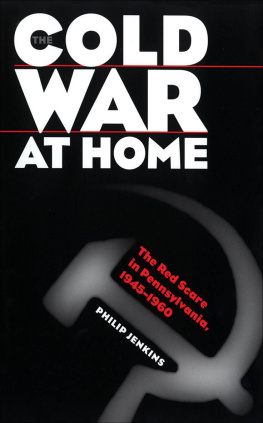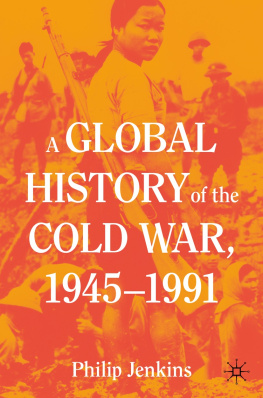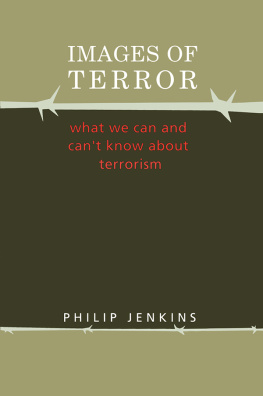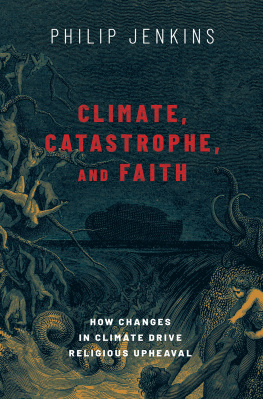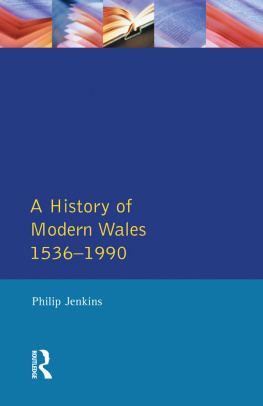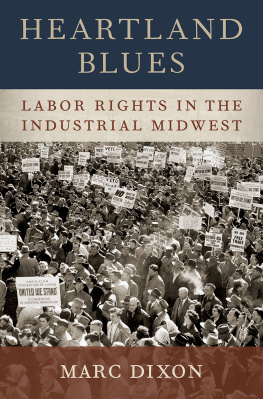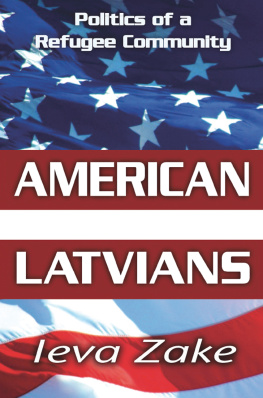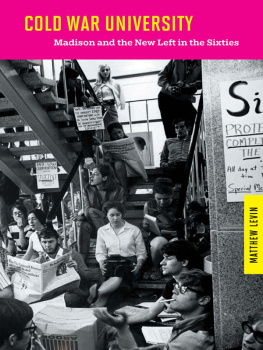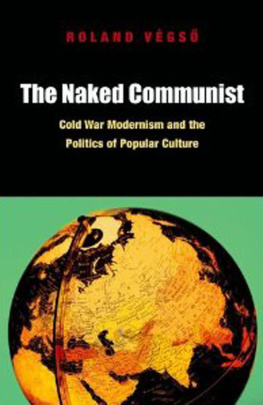THE COLD WAR AT HOME
1999 The University of North Carolina Press
All rights reserved
Designed by April Leidig-Higgins
Set in Minion type by Running Feet Books
Manufactured in the United States of America
The paper in this book meets
the guidelines for permanence and durability of the Committee on
Production Guidelines for Book Longevity of the
Council on Library Resources.
Library of Congress Cataloging-in-Publication Data
Jenkins, Philip, 1952- The Cold War at home :
the Red Scare in Pennsylvania, 1945-1960 /
by Philip Jenkins, p. cm. Includes bibliographical
references (p. ) and index.
ISBN 0-8078-2498-4 (cloth : alk. paper).
ISBN 0-8078-4781-x (pbk. : alk. paper)
1. Anti-communist movementsPennsylvania
History20th century. 2. Communism PennsylvaniaHistory20th century. 3. PennsylvaniaPolitics and government 1865-1950. 4. Internal securityPennsylvania History20th century 5. Anti-communist movementsUnited StatesHistory20th centuryCase studies. 6. CommunismUnited StatesHistory20th centuryCase studies. 7. United StatesPolitics and government 1933-1953Case studies. 8. Internal security United StatesHistory20th centuryCase studies. 9. Cold WarCase studies. I. Title.
F154.J46 1999 974.8o43dc21 99-17969 CIP
03 02 01 00 99 54321
This Book Was Digitally Manufactured.
To Liz
Contents
Tables
1 Major Centers of Henry Wallaces Support in Pennsylvania, 1948
2 The Shifting Partisan Balance in Pennsylvania, 1926-1964
3 Pennsylvania Senators and Governors, 1938-1968
4 Defendants in the Smith Act Trials in Pennsylvania
5 National Origins of the Largest Foreign-Born Populations in Pennsylvania, 1930
6 Selected Ethnic and Fraternal Organizations Listed as Subversive by the U.S. Attorney General
Acknowledgments
In undertaking the research for this book, I have been greatly assisted by support from several institutions. The Balch Institute for Ethnic Studies, in Philadelphia, gave me a one-month residential fellowship; I also received travel grants from the Institute for the Study of American Evangelicals, at Wheaton College, Illinois, and from the Harry S. Truman Presidential Library in Independence, Missouri. To all of these, my heartfelt thanks.
Abbreviations Used in the Text
ABCAmericans Battling CommunismACLUAmerican Civil Liberties UnionACTUAssociation of Catholic Trade UnionistsADAAmericans for Democratic ActionAFLAmerican Federation of LaborAJCAmerican Jewish CongressASCAmerican Slav CongressCAPCivil Air PatrolCFUCroatian Fraternal UnionCIOCongress of Industrial OrganizationsCIO-PACCongress of Industrial Organizations Political Action CommitteeCPACCitizens Political Action CommitteeCPUSACommunist Party of the United States of AmericaCRCCivil Rights CongressDARDaughters of the American RevolutionFBIFederal Bureau of InvestigationHUACHouse Un-American Activities CommitteeICCASPIndependent Citizens Council of the Arts and Sciences and ProfessionsIUEInternational Union of Electrical WorkersIWOInternational Workers OrderNAACPNational Association for the Advancement of Colored PeopleNCCNational Council of ChurchesOGPUObedinennoe Gosudarstvennoe Politicheskoe Upravlenie (Unified State Political Administration, i.e., Soviet secret police, 1923-34)PCAProgressive Citizens of AmericaPMAPennsylvania Manufacturers AssociationPNAPolish National AllianceSANSSlovenski Amerishki Narodni Svet (Slovenian American National Council)SISSSenate Internal Security Subcommittee, Committee on the JudiciarySNPJSlovenska Narodna Podporna Jednota (Slovene Mutual Benefit Union)UEUnited Electrical, Radio and Machine Workers of AmericaUSWAUnited Steelworkers of AmericaVFWVeterans of Foreign Wars
The Cold War at Home
1
Introduction
During the decade after the Second World War, one of the leading figures of Pennsylvanias Republican politics was James H. Duff, who successively served as governor and U.S. senator. Duff was distinctly progressive by the standards of contemporary Republicanism, presiding over an enlightened reformist administration in the state and taking a politically unpopular position against Senator Joseph McCarthy long before most members of his party would dare take such a step. Duff seems like a classic moderate or even liberal, which makes it surprising that on the issue of Communism he was more extreme than most of the visible Red-hunters in public life. In 1950 he declared that members of the Communist Party were ipso facto traitors deserving the penalties of treason, which meant hanging. Furthermore, he believed, if people put themselves in a position where their activities are doubtful, we are going to treat them if they are doubtful the way they are if they are wrong, because the time has come in America where we cant continue to make mistakes with the people who are trying to destroy our Way of Life. Such were the views of a moderate Republican in a politically moderate state.
Duffs position on Communism raises important questions about what exactly constituted extremism in these years. Specifically, it is a useful comment on what has come to be known as McCarthyism, a word that is often used in a far broader sense than it deserves. The term has come to be synonymous with the official movement to seek out and remove Communists from American life, a theme that became a national phenomenon in 1947 and remained in vogue at least through the mid-1950s. Accurately reflecting popular usage, Ellen Schrecker writes of McCarthyism, the anti-Communist political repression of Governor Duffs views suggest a problem with this approach: while he yielded to nobody in his anti-Communist zeal, he was categorically not a McCarthyite in the sense in which that word was used in his day. For Duff, as for many of his contemporaries who would have described themselves as liberals, McCarthyism was an unacceptable form of extremism. It was an irresponsible and dangerous tactic characterized by vague and unsubstantiated accusations for political ends, the exploitation of hysterical public fears, the reckless persecution of innocent or relatively harmless dissidents, and the practice of using loose connections between suspected individuals in order to construct a conspiracy so immense. Critics used the term essentially synonymously with witch-hunting or demagoguery, and, as such, it deserved utter repudiation. Worse, it distracted public attention from the urgent need to discover authentic Communists, who should at the least be removed from any office of trust. McCarthyism did not, in these years, refer to the use of quite intrusive or inquisitorial means to discover and root out genuine Communists or subversives, potential spies and saboteurs, a process that had sustained the support of a broad bipartisan consensus for several years before Senator McCarthy himself became a figure of national consequence. McCarthyism did not emerge until after many of the most important inquiries and purges had already occurred.
Criticizing the McCarthyite label would be pedantic if the widespread identification of the anti-Communist movement with Senator McCarthy had not done so much to shape popular historical understanding of these years. The word diverts attention from the other protagonists of this era, to the extent that the senator is popularly associated with the House Un-American Activities Committee (HUAC), which long predated him, and he attracts blame for acts that in fact occurred under the Democratic administration of Harry Truman. In folk memory, the voice of Joseph McCarthy may be indelibly associated with the notorious question of Are you now, or have you ever been, a member of the Communist Party?but the phrase was a clich before he ever used it. Conversely, the fall of McCarthy in 1954 is often taken as marking the end of the movement of hysterical anti-Communism that he symbolized, when in fact the basic system of anti-Communist investigations, loyalty oaths, and deportations continued for years afterward. David Cautes history,

